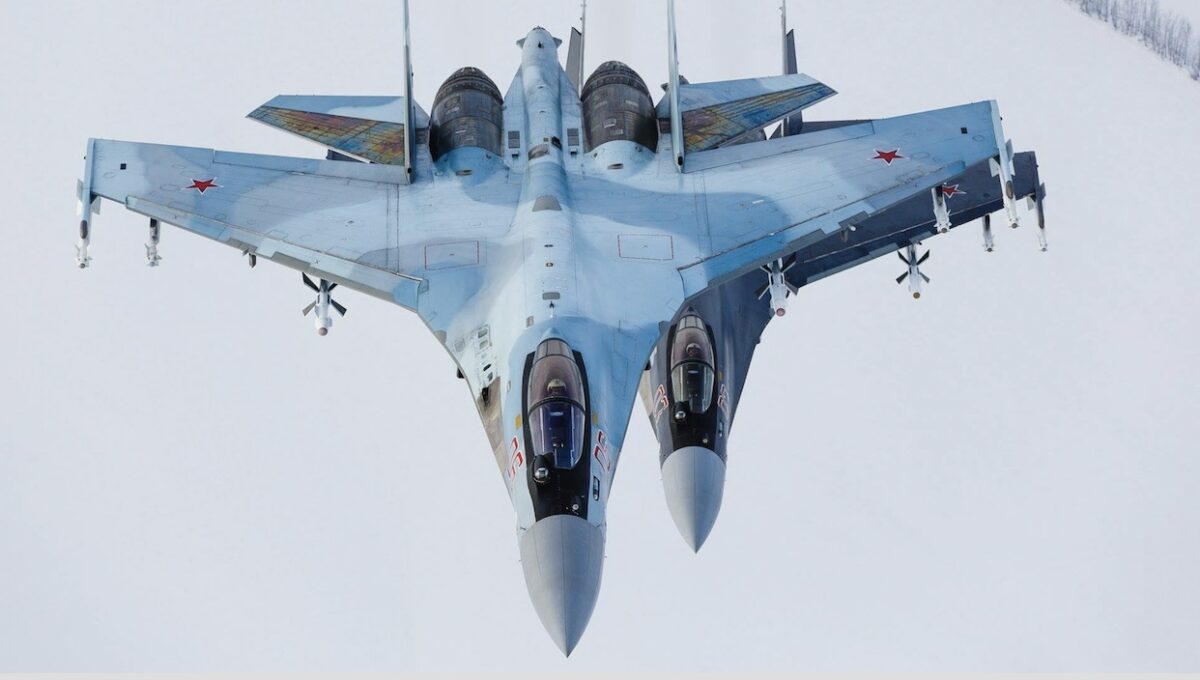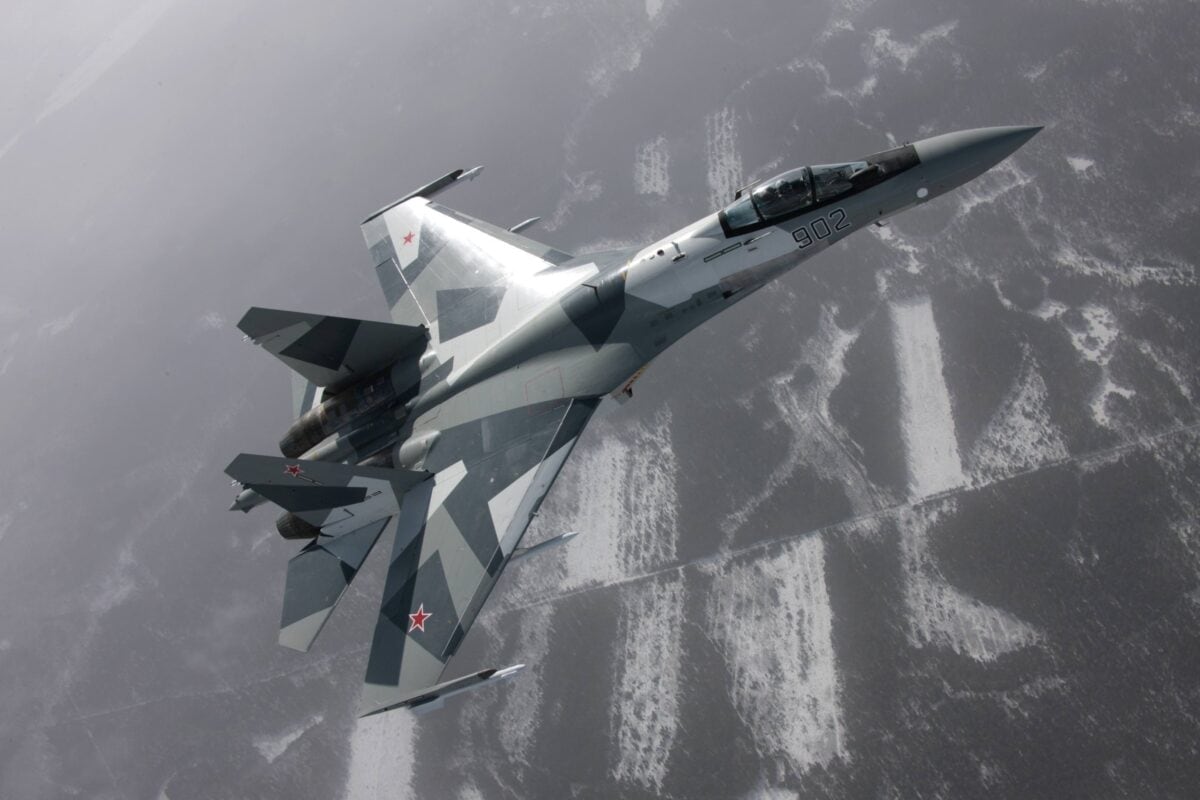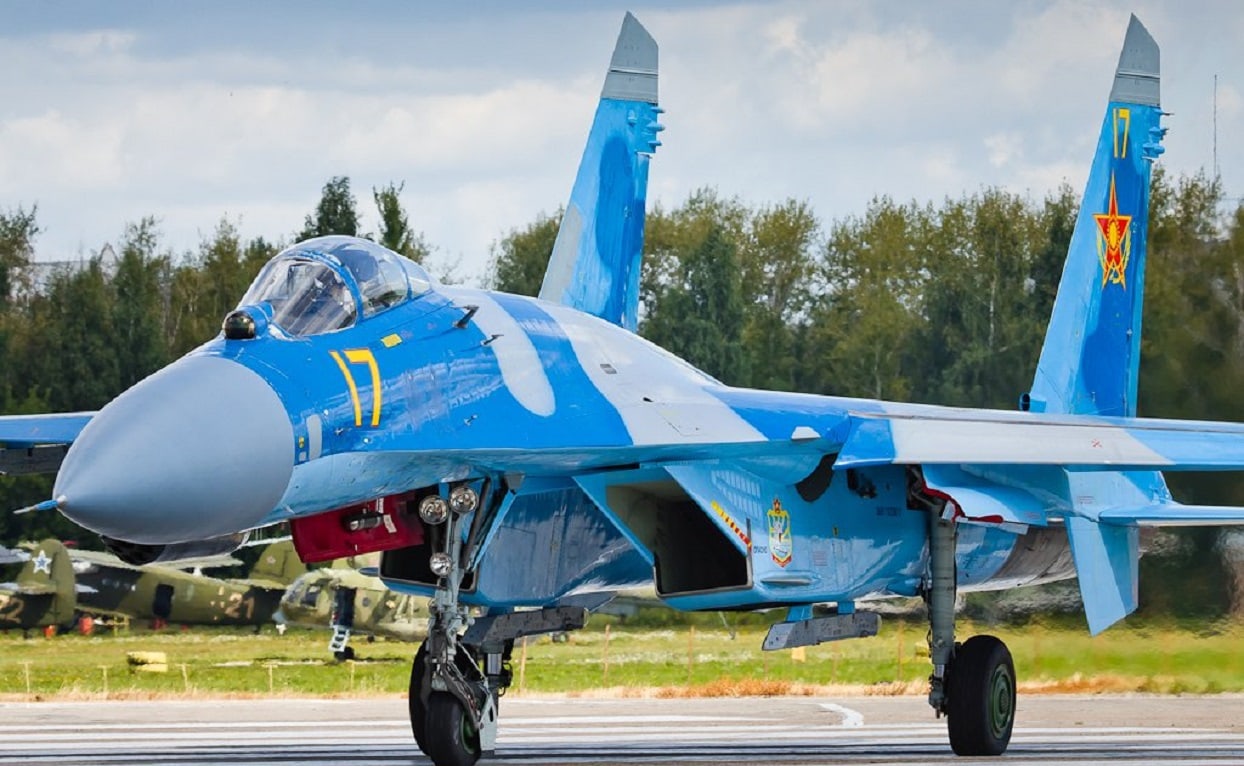Sukhoi Su-27 Fighter, a 2 Minute Explainer: Throughout 2020 and into 2021, the Russian Air Force scrambled its Sukhoi Su-27 fighter jets to intercept and “shadow” foreign aircraft that approached Russian air space. The fighters have been a key component in Russia’s aerial defense and the fighters have been sortied over the neutral waters of the Baltic, Barents and Black Seas and have been deployed to escort reconnaissance and patrol aircraft.
History
Developed during the Cold War by the Sukhoi Design Bureau and manufactured by Irkut Corporation, the twin-engine supermaneuverable fighter aircraft was the Soviet Union’s answer to the United States fourth-generation fighters including the Grumman F-14 Tomcat and F-15 Eagle. The Su-27 Flanker was the last major fighter to enter service with the Soviet Air Force, and it was intended both to defeat U.S. fighters over central Europe in a NATO-Warsaw Pact conflict and to patrol the airspace of the Soviet Union against U.S. bomber incursions.
It entered service with the Soviet Air Forces in 1985 and its primary role was to serve as a deterrent to American Strategic Air Command bombers, including the B-52 and B-1, while it could also serve as an escort for the Soviet’s own heavy bombers including the Tu-95 “Bear,” Tu-22M “Backfire” and Tu-160 “Blackjack.” It could also operate autonomously in combat over enemy territory and provide suppression of enemy airfields.
The fourth-generation Su-27 was designed with two Saturn AL-31F afterburning turbofan engines, which provide nearly 17,000 pounds of thrust each, and 27,600 pounds with afterburning. The aircraft was developed as a true speed demon, and it could reach 1,600 mph at altitude or 870 mph at sea level. It had a 62,000 foot ceiling and a range of 2,190 miles at altitude/830 miles at sea level.
It was armed with a 30mm Gryazev-Shipunov GSh-30-1 autocannon, and had ten external hardpoints that provided a capacity for up to 9,770 pounds, which could carry a variety of rockets including the S-8KOM/BM/OM, S-13T/OF or S-25OFM-PU; as well as up to six R-27R/ER/T/ET/P/EP air-to-air missiles or four R-73E AAMs. It could also carry RBK-250 or RBK-500 cluster bombs.
An Export Monster
Not originally designed with export in mind, production of the Su-27 continued in the final days of the Soviet Union and it was exported to China, Vietnam, Ethiopia and Indonesia. Soviet era aircraft also remained in service with Russia, Ukraine, Belarus, Kazakhstan and Uzbekistan, and the Su-27 survived the end of the Cold War to become one of the world’s premier export fighters.
In Russia, the Su-27 served as the basis for the development of the advanced variants including the Su-30, Su-33 carrier version with folding wings, Su-34, Su-35 and Su-37.

Image of Su-35 via Creative Commons.

Image of Su-35 via Creative Commons.
The legacy of the Soviet Cold War fighter lives on well into the 21st century as has been built under license in China as the J-11 (but with controversy), while another variant, the Su-30MK has been produced in India under licensed local production. Ukraine has also operated the Su-27M1, a modified version that has new navigation systems, extended-range radar and an increased ability to use unguided air-to-ground munitions.
Peter Suciu is a Michigan-based writer who has contributed to more than four dozen magazines, newspapers and websites. He regularly writes about military small arms, and is the author of several books on military headgear including A Gallery of Military Headdress, which is available on Amazon.com.

